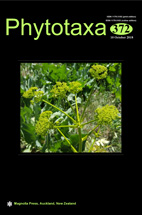Abstract
Chlorella-like coccoid green algae are widely distributed in many types of habitats such as freshwater, terrestrial and marine. One group of terrestrial microalgae belonging to the Trebouxiophyceae forms the monophyletic lineage of the Watanabea clade. This clade exclusively comprises of ellipsoid and spherical coccoid green algae, which traditionally have been assigned as different species of Chlorella. Within this clade, seven out of ten genera are described mainly based on phylogenetic analyses of SSU and rbcL sequences. Most of the genera are represented by only one or two species that are rarely found in natural samples. In contrast, the genus Chloroidium is widely distributed across different habitats. We investigated 34 new isolates, which were originally assigned as Chloroidium or Chlorella, using an integrative approach. The phylogenetic analyses of SSU and ITS rDNA sequences revealed nine lineages, eight of which were highly supported in all of our bootstrap and Bayesian analyses. The ITS-2/CBC approach clearly demonstrated that these nine lineages represent individual species. The haplotype network analyses revealed that three out of them were widely distributed and showed no preference for any habitat.
The comprehensive study of SSU and rbcL datasets also revealed that no clear synapomorphy could be found to support the assigned genus Parachloroidium. As a result of our findings, we proposed that both species belonging to Parachloroidium be transferred to Chloroidium. In addition, we re-established two species originally described by Chodat as new members of Chloroidium (C. lichenum, C. viscosum). Two of the nine lineages (C. antarcticum, C. arboriculum) were newly described in this study.

